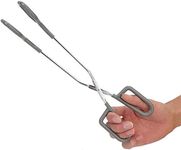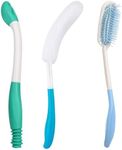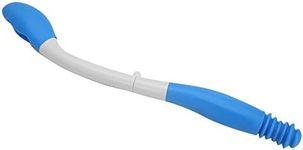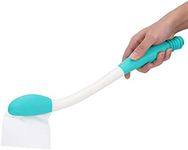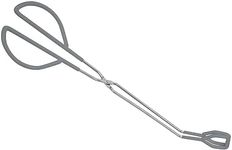Buying Guide for the Best Toilet Aid For Wiping
Choosing a toilet aid for wiping can make a big difference in personal hygiene and independence, especially for people with limited mobility, flexibility, or strength. The right product should be comfortable, easy to use, and suited to your specific needs. When shopping, it's important to consider how the aid will fit into your daily routine, how easy it is to clean, and whether it will work well with your body and bathroom setup. Understanding the key features will help you make a confident and informed choice.Length and ReachLength and reach refer to how long the aid is and how far it can extend your arm. This is important because it determines how easily you can reach the area you need to clean without straining or twisting your body. Shorter aids are more compact and easier to store, but may not provide enough reach for people with limited mobility. Longer aids offer more reach, which is helpful if you have trouble bending or reaching behind you. To pick the right length, think about your range of motion and where you need the most help—if you have severe mobility issues, a longer aid is usually better.
Grip and Handle DesignThe grip and handle design affect how comfortable and secure the aid feels in your hand. Some handles are straight, while others are curved or have ergonomic shapes to fit your hand better. A good grip is important for people with weak hands or arthritis, as it prevents slipping and makes the aid easier to control. If you have trouble holding objects, look for a handle with a non-slip surface or a larger, contoured shape. Try to imagine how the handle will feel in your hand and whether you can hold it firmly during use.
Material and CleanabilityMaterial and cleanability refer to what the aid is made of and how easy it is to keep clean. Most toilet aids are made from plastic or silicone, which are lightweight and easy to wash. Some materials are softer and more flexible, which can be more comfortable, while others are firmer for better control. It's important to choose a material that is easy to sanitize, since hygiene is a top priority. If you want something low-maintenance, look for aids that can be rinsed under water or wiped down quickly after use.
Toilet Paper or Wipe CompatibilityThis spec describes what kind of wiping material the aid can hold—some are designed for regular toilet paper, while others can hold wet wipes or pre-moistened cloths. This is important because it affects your comfort and cleaning effectiveness. If you prefer using wet wipes for a more thorough clean, make sure the aid can securely hold them. If you use standard toilet paper, check that the aid can grip it firmly and release it easily when you're done. Think about your personal hygiene routine and choose an aid that matches your preferred wiping material.
Release MechanismThe release mechanism is how the aid lets go of the used paper or wipe after cleaning. Some aids have a button or lever that releases the paper, while others require a simple twist or pull. This feature is important for hygiene and convenience, as it allows you to dispose of the used material without touching it. If you have limited hand strength or dexterity, look for a release mechanism that is easy to operate with minimal effort. Consider how easy it will be to use the release function, especially if you have arthritis or other hand issues.
Portability and StoragePortability and storage refer to how easy it is to carry and store the aid when not in use. Some aids are foldable or come with a carrying case, making them convenient for travel or discreet storage. If you need to take the aid with you to work, on trips, or to public restrooms, portability is a key factor. If you only plan to use it at home, a larger or non-folding aid may be fine. Think about where and how often you'll use the aid, and choose one that fits your lifestyle.
